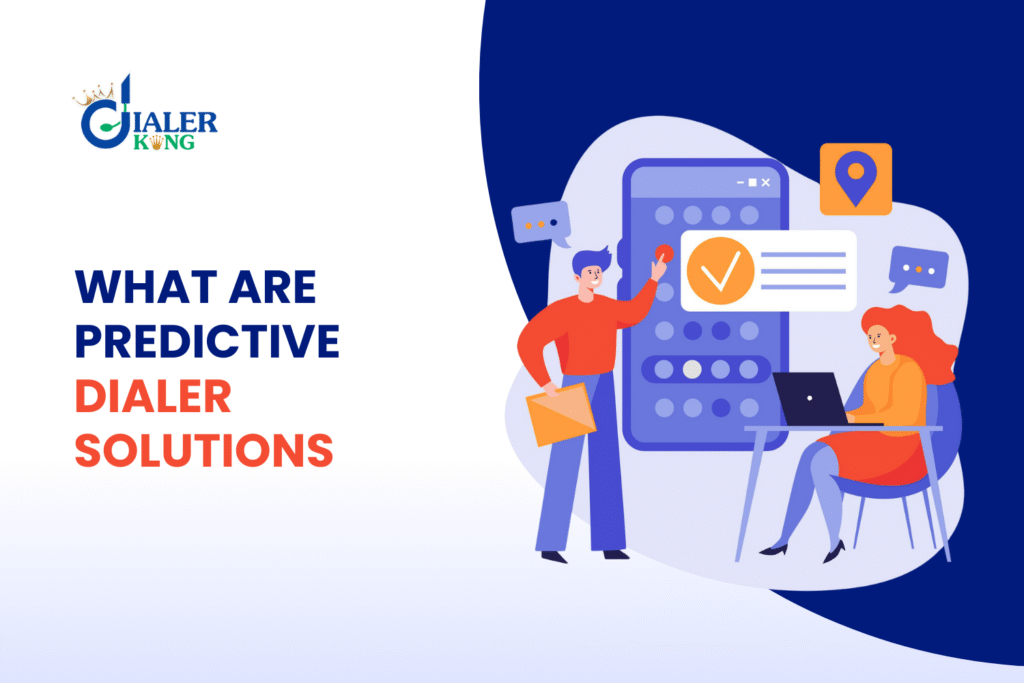
What Is Predictive Dialer Solutions ?

In today’s competitive business landscape, organizations are constantly seeking innovative solutions to improve their communication processes. One such solution that has gained significant popularity is a predictive dialer. By leveraging advanced algorithms and automation, predictive dialers have proven to be highly effective in managing outbound calls and enhancing customer interactions.
Understanding Predictive Dialer
A predictive dialer is a telephony system that utilizes algorithms and artificial intelligence to automate the process of dialing a large volume of phone numbers. It is commonly used in call centers and sales organizations to optimize the efficiency of outbound calls. The main objective of a predictive dialer is to minimize agent idle time and maximize the number of successful connections with customers.
How Does a Predictive Dialer Work?
Predictive dialers work by analyzing data from the call center’s database, including the number of available agents, average call duration, and the probability of a call being answered. Based on this information, the predictive dialer calculates the optimal number of calls to make, ensuring that an agent is available to handle the call when it connects. This proactive approach allows call centers to achieve higher productivity and better utilization of resources.
The Benefits of Using a Predictive Dialer
Boosting Sales and Productivity
A predictive dialer significantly boosts sales and productivity by eliminating unproductive tasks such as manual dialing and waiting for calls to connect. With a predictive dialer, agents spend more time speaking with customers and less time navigating through busy tones or unanswered calls. This increased efficiency translates into higher sales conversions and revenue generation.
Streamlining Customer Service
Predictive dialers streamline customer service by ensuring that customers connect to agents promptly. By minimizing wait times and reducing the chance of dropped or missed calls, customer satisfaction levels improves significantly. Agents can access customer information quickly, enabling personalized interactions and efficient issue resolution.
Enhancing Call Center Efficiency
A predictive dialer optimizes call center efficiency by intelligently managing call pacing. It dynamically adjusts the dialing rate based on agent availability and call response patterns, maximizing the utilization of resources. This automated process eliminates manual dialing errors and minimizes idle time, allowing call centers to handle a higher volume of calls with the same number of agents.
Predictive Dialer Features
Predictive dialers offer a range of features that contribute to their effectiveness. Some key features include:
- Automatic Call Distribution (ACD): Routes calls to the most suitable agent based on predefined rules or criteria.
- Call Recording: Records conversations for quality assurance, training, and compliance purposes.
- Call Monitoring: Allows supervisors to listen to live calls, provide real-time coaching, and ensure quality standards.
- Reporting and Analytics: Provides insights into call center performance, agent productivity, and campaign effectiveness.
- CRM Integration: Integrates with customer relationship management (CRM) systems to access customer information and enable personalized interactions.
Customization and Scalability
Predictive dialers can be customized to meet the specific needs of different industries and organizations. They offer scalability options that allow businesses to easily adjust the system according to their changing requirements. Whether it’s adding more agents or expanding the dialing capacity, predictive dialers can accommodate growth without disrupting operations.
Compliance and Security
When implementing a predictive dialer, compliance with regulatory requirements, such as telemarketing laws and data protection regulations, is of utmost importance. Predictive dialers come with built-in features to ensure compliance and protect sensitive customer data. These features include Do Not Call (DNC) list management, call recording encryption, and secure data transmission.
Predictive Dialer vs. Other Dialing Systems
While predictive dialers offer many advantages, it’s essential to understand their differences compared to other dialing systems. Predictive dialers are distinct from preview dialers and progressive dialers.
- Preview Dialers: Agents manually review customer information before dialing the call.
- Progressive Dialers: Calls are automatically dialed, but agents have control over when to initiate the next call.
Predictive dialers strike a balance between efficiency and agent control, making them ideal for high-volume outbound calling scenarios.
Best Practices for Implementing a Predictive Dialer
To maximize the benefits of a predictive dialer, organizations should consider the following best practices:
- Conduct thorough training sessions to ensure agents understand the system and its features.
- Optimize dialing algorithms based on call response patterns and agent performance.
- Regularly monitor and analyze key performance metrics to identify areas for improvement.
- Keep agents motivated and engaged by providing regular feedback and recognition.
Choosing the Right Predictive Dialer Solution
When selecting a predictive dialer solution, organizations should consider their specific requirements and evaluate different options based on factors such as scalability, reliability, ease of use, and integration capabilities. It is advisable to choose a reputable vendor with a track record of delivering reliable and feature-rich solutions.
Common Challenges and Solutions
While predictive dialers offer significant advantages, they may also present some challenges. Common challenges include regulatory compliance, call abandonment, and managing call volumes. These challenges can be addressed through proactive monitoring, agent training, and the implementation of appropriate dialing strategies.
Conclusion
Predictive dialers have revolutionized the way businesses engage with their customers. By automating the dialing process, businesses can enhance their sales and customer service efforts while optimizing call center efficiency. When implemented correctly and aligned with best practices, predictive dialers can drive significant improvements in productivity, customer satisfaction, and revenue generation.
Frequently Asked Questions (FAQs)
What industries can benefit from using a predictive dialer?
Predictive dialers are beneficial for a wide range of industries, including telemarketing, customer service, collections, and sales organizations.
Are predictive dialers suitable for small businesses?
Yes, predictive dialers can be customized to suit the needs of small businesses. They offer scalability options that allow for future growth.
Do predictive dialers only work with phone calls?
While predictive dialers are primarily used for outbound phone calls, they can also support other communication channels like SMS and email.
How can predictive dialers improve agent productivity?
Predictive dialers automate the dialing process, reducing agent idle time and increasing the number of customer interactions, leading to improved productivity.
What security measures are in place to protect customer data?
Predictive dialers incorporate security features such as call recording encryption, secure data transmission, and compliance with data protection regulations.










 Microsoft Teams
:
Dialer King
Microsoft Teams
:
Dialer King  Email: dialer@dialerking.com
Email: dialer@dialerking.com  Phone: +91 940 820 7777
Phone: +91 940 820 7777  WhatsApp: +1 (202) 249-5906
WhatsApp: +1 (202) 249-5906 




 Find Your Perfect Role
Find Your Perfect Role